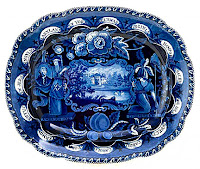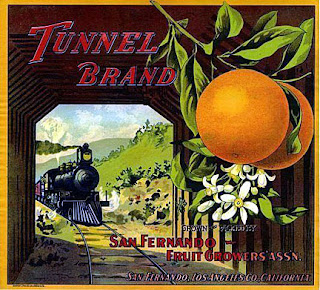 QUESTION: Every time I go into an antique mall, I become overwhelmed by all the items. Booth after booth of what seems like junk. Yet I know there must be some interesting and perhaps valuable antiques hidden there. How can I make sense of it all?
QUESTION: Every time I go into an antique mall, I become overwhelmed by all the items. Booth after booth of what seems like junk. Yet I know there must be some interesting and perhaps valuable antiques hidden there. How can I make sense of it all?ANSWER: Previously, we took a look at some of the main categories of antiques. But beyond them lies an array of specialty categories.
One of these is the toy category. Antique toys take in everything from cast-iron banks and vehicles to board games and rocking horses. The diversification is so great that most collectors specialize in collecting one type of toy or another. Few are generalists. But collecting toys can be expensive. The more specialized antiques are, the most costly they become.
 A subcategory of toys is dolls. Dolls, dolls, and more dolls dominate this category with teddy bears a close second. There are other products, but from a value standpoint, dolls and bears dominate. English and German dolls are most sought after while German Steiff bears are desired almost exclusively. This category generates more emotion among collectors than does any other. As a result, collectors and dealers become very competent and have extremely specialized knowledge. A beginner in antiques should tread lightly as this is a very technical category filled with passionate and very knowledgeable people.
A subcategory of toys is dolls. Dolls, dolls, and more dolls dominate this category with teddy bears a close second. There are other products, but from a value standpoint, dolls and bears dominate. English and German dolls are most sought after while German Steiff bears are desired almost exclusively. This category generates more emotion among collectors than does any other. As a result, collectors and dealers become very competent and have extremely specialized knowledge. A beginner in antiques should tread lightly as this is a very technical category filled with passionate and very knowledgeable people.
 Like the doll category, antique collectors of scientific instruments are very knowledgeable. As a subcategory of clocks, collecting barometers and chronometers, particularly marine chronometers and nautical instruments is also a male dominated group. These seem to invoke the smell of the sea in their favorite piece. Again, English makers predominate. Among instruments, telescopes are popular as are surveying and nautical instruments. Microscopes and medical instruments follow hard on their heels.
Like the doll category, antique collectors of scientific instruments are very knowledgeable. As a subcategory of clocks, collecting barometers and chronometers, particularly marine chronometers and nautical instruments is also a male dominated group. These seem to invoke the smell of the sea in their favorite piece. Again, English makers predominate. Among instruments, telescopes are popular as are surveying and nautical instruments. Microscopes and medical instruments follow hard on their heels.
Another antiques specialty is jewelry. Precious and semi-precious, as well as costume jewelry are the dominant categories with Victorian era jewelry the most popular. Specialized knowledge is required in the precious jewelry category, but most ordinary folks soon become familiar with the semi-precious stones and the costume jewelry found in all antique malls. Pins, earrings and bracelets are the most popular product lines.
 One of the most interesting specialty categories is commemorative antiques. Relying mainly on English Royalty and history, the commemorative antique category consists of anything celebrating an occasion. Royal weddings, a monarch's reign, births and victorious battles are all occasions for producing commemorative products. The Victorian period is the most popular, but more localized events such as battles or achievements are also forever immortalized on plates, jugs and spoons.
One of the most interesting specialty categories is commemorative antiques. Relying mainly on English Royalty and history, the commemorative antique category consists of anything celebrating an occasion. Royal weddings, a monarch's reign, births and victorious battles are all occasions for producing commemorative products. The Victorian period is the most popular, but more localized events such as battles or achievements are also forever immortalized on plates, jugs and spoons.
Collecting Asian antiques takes a lot of effort and research. This highly technical category is best avoided by beginners, Chinese and Japanese antiques dominate this category. Eighteenth Century Tang, Quing, and Cantonese pieces are quite popular, and Japanese antiques are particularly sought after by Japanese collectors who tend to be very nationalistic. Imari ceramics and Satsuma pottery are much in demand among this group of wonderful antique buffs. And more than in any other speciality, the chances of fakes is far greater.
 The military antiques category takes in arms and armor, swords and daggers, pistols, revolvers, medals, and military equipment. British, German, American and Italian items are all covered in this class. For the beginner it is best to avoid these antiques until you have time to study them. Definitely a man's "thing," military antiques cover everything related to wars and regimental history.
The military antiques category takes in arms and armor, swords and daggers, pistols, revolvers, medals, and military equipment. British, German, American and Italian items are all covered in this class. For the beginner it is best to avoid these antiques until you have time to study them. Definitely a man's "thing," military antiques cover everything related to wars and regimental history.
Traditionally, antiques include objects that are 100 years old and older. Items less than a century old are typically classified as collectibles. This category covers everything from blue willow patterned ceramics to the war medals. Often collectibles can be quite new and tied to popular media and the movies.
 A subcategory of collectibles is memorabilia. Dominated by Walt Disney products, particularly those to do with classics such as "Snow White." Elvis leads the list of musical memorabilia. Postcards, Coca-Cola signs and signed autographed copies of correspondence are also in demand. This is a fun category as it's so diverse. But it’s also very fickle and tends to go through trendy periods when prices fluctuate widely.
A subcategory of collectibles is memorabilia. Dominated by Walt Disney products, particularly those to do with classics such as "Snow White." Elvis leads the list of musical memorabilia. Postcards, Coca-Cola signs and signed autographed copies of correspondence are also in demand. This is a fun category as it's so diverse. But it’s also very fickle and tends to go through trendy periods when prices fluctuate widely.
While the main and specialized antiques and collectibles categories mentioned here are the most popular, there are many others. With antiques and collectibles, there’s something for everyone to collect.
To read more articles on antiques, please visit the Antiques Articles section of my Web site. And to stay up to the minute on antiques and collectibles, please join the over 30,000 readers by following my free online magazine, #TheAntiquesAlmanac. Learn more about railroad antiques in "All Aboard!" in the 2021 Summer Edition, online now. And to read daily posts about unique objects from the past and their histories, like the #Antiques and More Collection on Facebook.













































